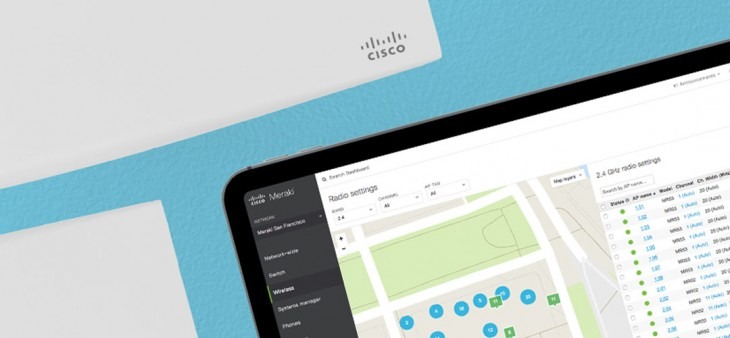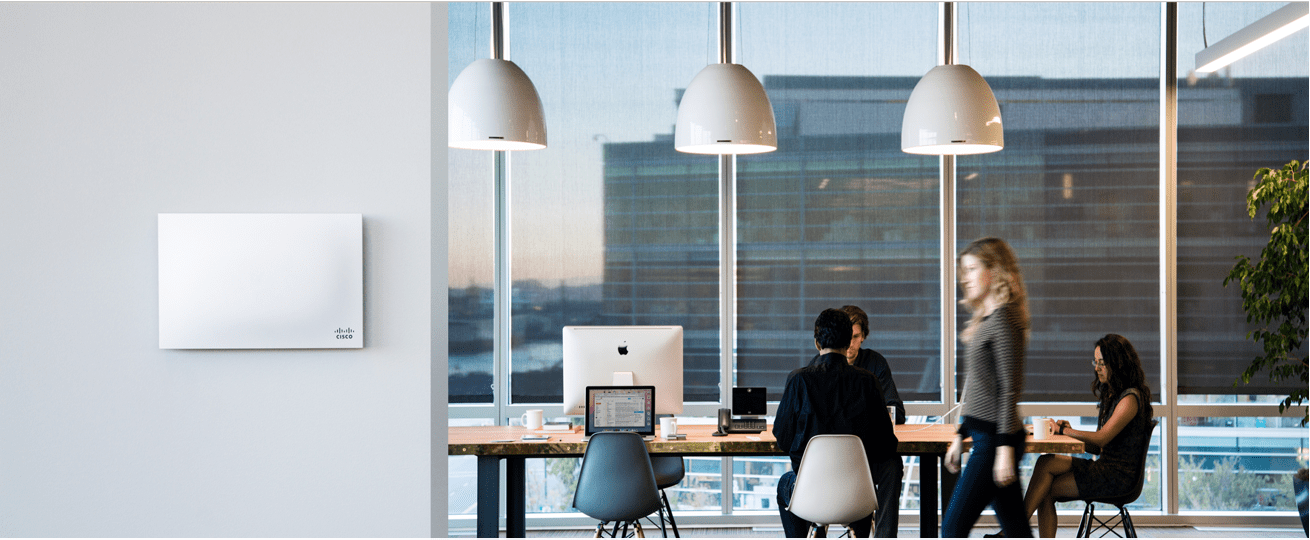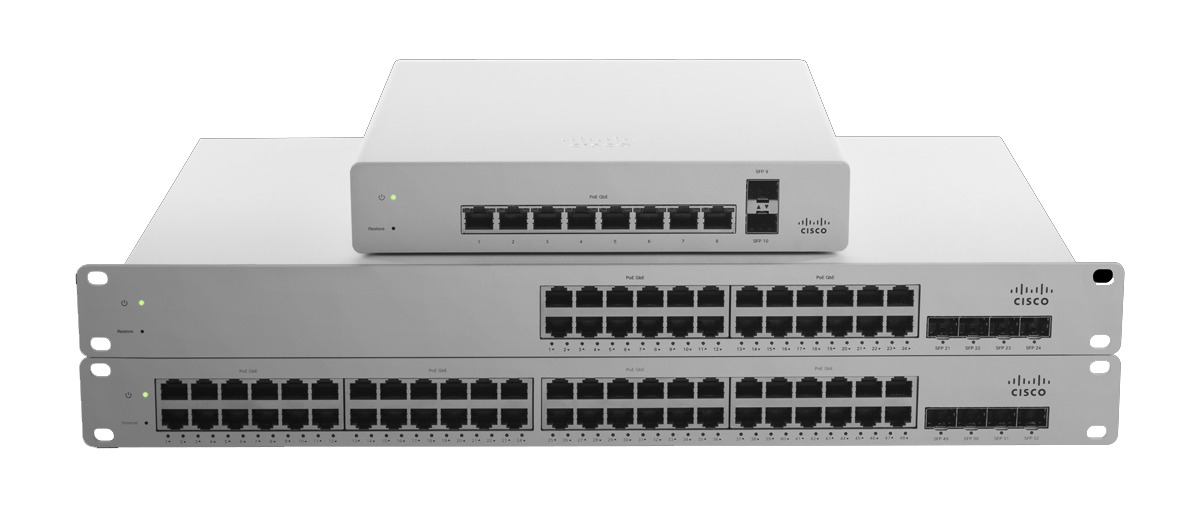
It’s no secret that upgrading your network switches can be a significant financial and technological commitment. Upgrading switches is also something that you can’t ignore.
Switches are the foundation to any network and are estimated to last anywhere between 5-10 years. As networks within the workplace become increasingly important, it is critical that modern network switches are reliable, easy to manage at scale and compatible with the latest technologies.
Modern technology is constantly improving.
As a result, networks are becoming increasingly more complicated. Decision-makers are beginning to look beyond the initial hardware costs to include operational expenses. These can be a significant, recurring cost. This is known as Total Cost of Ownership (TCO). There are other factors which contribute to the expense of switches, such as:
- Initial configuration
- Network complexity
- Troubleshooting
- Security
- Revision management
These factors all add up to a substantial cost each year. However, if you choose the right solution, these can pay massive dividends and often recover the costs of a network refresh over the lifetime of the deployment.
Customers of the Meraki Switches have been able to leverage the ease of management and unique technologies that are inherent to the Meraki cloud-managed solution.
Rumour has it that a business with 300 switches, 1000 employees, and 150 locations can see cost savings of 80% when using a zero-touch cloud provisioning approach.
So, how is this possible?
Meraki Switches can be configured before they even arrive to your workplace. This is executed by adding them to the cloud and then use Meraki features called “virtual stacking” and Configuration Clone which replicate settings. Say goodbye to staging. Once the switches are connected, they will automatically update their software and configuration settings.
What’s The Difference Between Traditional Switches And Meraki Switches?

There are several components needed to maintain a healthy switching network. Each element needs its own resources. Cloud networking technologies help reduce the amount of time and effort required to maintain a healthy network, while ensuring a secure, efficient and reliable enterprise solution.
| Staging and Deployment | |
| Traditional:
Command-based configuration of network switches requires expertise and substantial labour hours. There are various overlay platforms available which streamline this process; however, they still require a significant time investment for training and initial setup. |
Meraki MS:
With Meraki cloud-managed switches, you do not need to pre-stage hardware, not even for 1000s of switches or ports. Resulting in cost savings and a decrease of complexity in the deployment stages of a network refresh.
The key features are:
The average cost savings are usually around 60-80% |
| Network Monitoring & Maintenance | |
| Traditional:
A vital part of any network team’s operations are configuration changes and network monitoring. These changes are made by connecting to a switch via IP, authenticating, and then making command-line changes to the desired ports or settings. Usually, monitoring is a manual process, or it requires sophisticated add-on systems that aggregate device logs and alerts. |
Meraki MS:
Fortunately, Meraki dashboard has Network Topology, which makes it easy to quickly locate devices, users, and troublesome spots in the network. You can receive summary reports via email, which provides an overview of how the network is being used. This report can even highlight how much energy is being consumed by PoE devices, which can also help manage operational costs. Resulting in savings. The key features are:
The average cost savings are 40-60% |
| Support | |
| Traditional:
The most important thing for a network team is supporting end users. Usually, most reported issues are caused by faulty configurations. However, figuring out the root causes can be difficult and complicated, particularly in remote locations. |
Meraki MS:
The Meraki Dashboard have remote troubleshooting tools which are easy to access and understand. These tools include:
These all dramatically increase multi-site troubleshooting even in locations where IT is not present.
The key features:
The average cost savings are 60% |
| Revision Management | |
| Traditional:
Keeping a network secure and efficient is time consuming. Software updates, security patches and revision management are important to keep the network secure. These changes, usually a manual upgrade process per switch with additional servers for log collection and software image hosting. |
Meraki MS:
Meraki switches eliminate the manual process of keeping a network secure and efficient by securely upgrading via the cloud. Resulting in running the latest and safest software which saves considerable amounts of time. Automatic change logs capture every change and make it easy to revert a device’s configuration. The key features:
The average cost savings are 60% |
| Security | |
| Traditional:
Setting up and managing wired security is a complicated task. This usually required per-switch configuration of access servers in addition of training any new employees you may hire. |
Meraki MS:
Meraki Switches make this process a whole lot easier by making wired security easy to manage and configure with network-wide access policies that can apply to thousands of switches and ports. You can extend security to your endpoints with Meraki Systems Manager, an MDM solution that seamlessly integrates with Meraki MS Switches. The key features:
|
| Energy Consumption | |
| Traditional:
Power consumption is commonly underestimated when considering networking hardware and connected peripherals. In addition to this, if you need additional platforms for reporting and control, these require time and expertise to set up. |
Meraki MS:
Helps to reduce the power consumption through their intelligent PoE energy budgeting port scheduling features which reduce the annual energy costs of running switches and powered devices like phones and access points. The key features:
The average cost savings are 60% |
How Exactly Does Each Feature Save You Money?
Several network solutions claim to have a good ROI on their networking solutions. However, a small amount of these solutions can’t provide the ROI without additional overlay platforms as well as expensive software to maintain. Meraki switches come with simple and built-in features that can efficiently reduce a business’ operational expenses.
So, what are these features?
- Zero-Touch Provisioning – 40-60% Savings
To ensure a successful switch deployment takes a lot of time and configuration. Meraki is unique as it simplifies the setting up process. The unique approach reduces the time it takes to initially provision network switches, resulting in cost savings of 60% and 80% when it is compared to traditional command-based solutions
- Rapid Provisioning
With Meraki switches, you can simply add the new switch to the dashboard and start configuring. All without unboxing the new product. The cloud will update the configuration when you are ready to deploy the new switch.
Don’t believe us? Let’s walk you through an example:
Company profile: Tech company with 200 locations
Two hours of onsite configuration per location at an average onsite hourly rate of £100 would cost a 200-location business £40,000. Or you could purchase a Meraki Switch and apply these savings to the initial investment.
Makes sense, right?
- Automatic Cloud Updates
If you manage many sites keeping devices up to date can be a big task. With a Meraki switch, whenever a new update is available, you can simply select the desired upgrade window, and when a new software update is available, the dashboard will update while you sleep.
Let’s put that into perspective.
Company profile: Retailer with 500 locations
At 150 locations with 2 switches per store, each switch takes approximately 1 hour of installation and configuration. This accumulates to around 300 hours or £30,000 in wages at an average onsite rate of £100 per hour. If you switch to Meraki and use their switch clone and automatically update software this will then reduce install time to just 10 minutes and save £25,000 in provisioning costs.
- Virtual Stacking & Automatic Device Discovery
Meraki Switches collate all interfaces for all switch ports which makes it easy to search for, select and make changes to as many ports, on as many switches as possible.
Let’s do the maths
Company profile: Restaurant chain with 400 locations
It takes at least 10 minutes to find a device behind a switch port using various commands. Doing this once per location per week, result in over 3400 hours of £170,000 in wages at an average of £50 per hour salary. Using Meraki switches can make this a 30-second task with the Meraki built-in client search and save over £160,000 which equates to 95% of savings.
- Switch Clone
Copy the configuration from one switch to another with one click
- PoE Reporting & Port Scheduling – 40% Savings
On the Meraki switches, you can easily and quickly see how much power is being consumed by the VoIP phones and access points. Simply use the summary report to find the energy consumption per switch and for the network. You can then use features like port scheduling to be able to shut off power outside of business hours, therefore, saving you money across all locations.
Don’t believe us? Let us show you.
Company profile: Manufacturing company with three mid-sized campuses.
With approximately 50 access switches, 150 access points, and 200 VoIP phones per campus, PoE power consumption is an estimated 2.5kWh per switch per day (£16,500 per year at £0/12/kWh). By using PoE scheduling, this consumption can be reduced by 60%, saving nearly £10,000 per year in energy costs.
- Reporting, Visibility & Alerts
If you are having to manage many locations, then getting an overview of all networks and devices can be a daunting task. Including reporting and visibility per site often requires additional solutions to be set up and maintained, which increases up-front and operational costs. Meraki switches have built-in alerting and reporting features so there is no need for maintaining yet another solution.
- Network alerts
- Deep L7 Traffic Analytics
- Network topology
- Summary Reporting (with Email Scheduling)
- Built-in Event Logging
- Configuration Change Log
Company profile: Tech company with 5 small-sized campuses
Looking for a solution to collect logs and send alerts for each site, with network topology for easily troubleshooting each network? This requires three separate solutions which each have up-front costs, require complex configuration and on-going maintenance, and cost an average of £10,000 or more. Meraki is the only solution with all these tools and more, saving thousands of pounds in hardware, licensing and continuous maintenance costs.
Need more information about switching to Cisco Meraki? Call our team free on 0800 488 0000 to discuss your options. Or, you can visit our website to explore the range.

